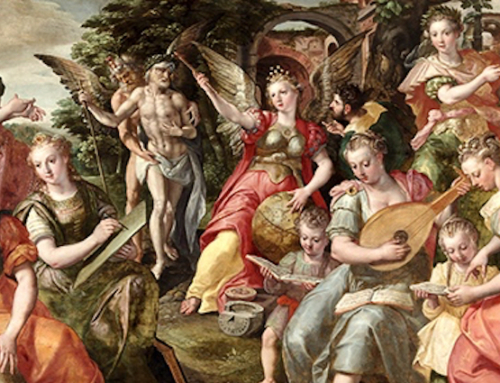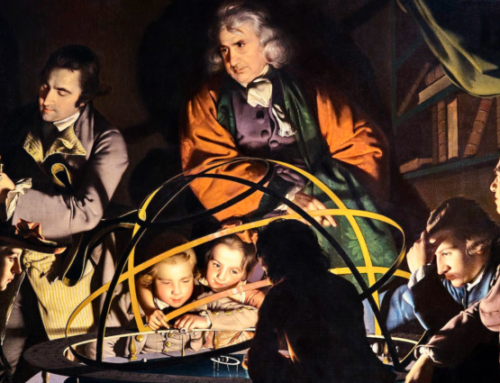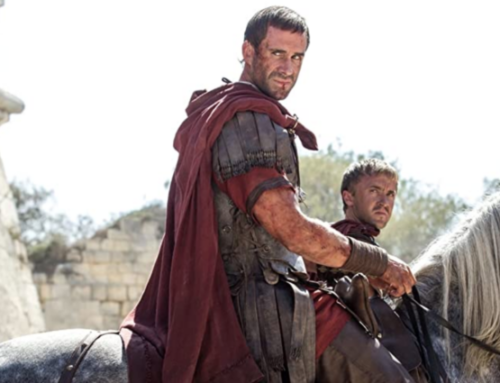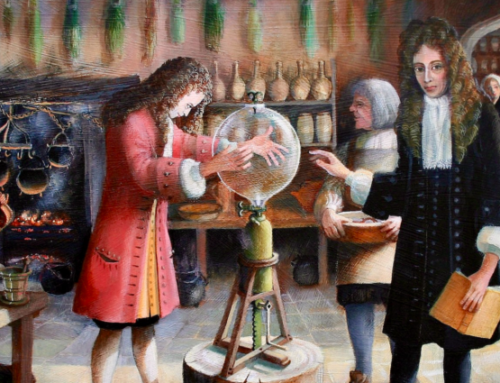 As we all deal with the latest pandemic, it’s good to know that we can call on experts to help us through—and eventually out—of it. But it’s also good to know that we can also call on non-experts to help us as well. Included among them might even be a non-expert who had his suspicions about experts.
As we all deal with the latest pandemic, it’s good to know that we can call on experts to help us through—and eventually out—of it. But it’s also good to know that we can also call on non-experts to help us as well. Included among them might even be a non-expert who had his suspicions about experts.
This man of suspicion and non-expertise is G.K. Chesterton who died in 1936, or well before the spread of the coronavirus, let alone the spread of scientific models to track the potential spread of the disease.
Experts, he thought, might be fine folks to have on hand if a library needed to be catalogued or a solar system was there to be discovered—or maybe even if a virus should be tracked. But for many matters of this earthly life Chesterton thought it made much more sense to adhere to the principle behind the jury system. That’s because matters of guilt or innocence were too important to be left to experts. Therefore, when it came to such a matter it made much more sense to gather together “twelve people who happened to be standing about at the moment.” If anyone should doubt the validity of this approach, Chesterton reminded his readers that essentially the same procedure was once followed by the founder of Christianity.
Experts, Chesterton worried, were the new aristocrats of his 20th century. Or at least they liked to fancy themselves as such. He much preferred the aristocrats of old, who merely thought that they knew how to live well, as opposed to the modern expert claimed to know better.
Of course, that same modern expert may very well have great command over the particulars of his chosen field of expertise. And that knowledge might come to be very valuable indeed. Then again, it might not.
In any case, scientific expertise, alleged, advertised, or actual, should never be the end of the story. This is especially so when it comes to the application of scientific knowledge or the uses to which it is put.
Let’s be clear here. G.K. Chesterton was no Luddite. He readily conceded that products of science could be “wonderful things.” At the same time, he still reminds us, no product of science is, “in any ultimate sense,” necessarily a good thing. For that matter, no product of science is, “by definition,” automatically a bad thing.
For Chesterton, what it all came down to was this: science was either a “tool or a toy.” Actually, he refined that statement just a bit more: science was “only” a tool or a toy.
Did he prefer one to the other? Most definitely. Science as a toy was science as its “highest and noblest.” After all, a toy was something of far greater “philosophical grandeur” than a mere tool. Why? Because a toy “is valued for itself,” while a tool only has value for some other purpose. In sum, a toy is an end in itself, while a tool is only a means to an end.
In his musings on science Chesterton never got around to musing about viruses and models. But he did get to the heart of the matter when it came to the role of science and scientific expertise, no matter the matter at hand: in dealing with pandemics science may not be a toy, but it can only be a tool.
In a particular essay on this general subject he asked his readers to think of a hammer (the tool) and a doll house (the toy). Of course, science had something to do with the making of each of them. But science could never be the carpenter using the tool or the child playing with the doll house. In other Chestertonian words, science should never be the thing that has “natural authority” over the tool.
That authority has to be invested in man. Chesterton’s chief concern here was that man was in the process of abdicating his authority. He worried that the modern man of his era was increasingly inclined to stand aside and permit the tool called science to dictate what should be done politically and socially, because it could be done scientifically.
Chesterton went on to clinch his standing as a non-Luddite by endorsing such “splendid” achievements as the telephone and the automobile, each of which was a tool and a toy, the splendidness of which ultimately depended upon the uses to which each was put.
And the railroad? While much more a tool than a toy, it was anything but an “awful thing,” What must be added to the equation is the railway engineer, who might be an “awful man.” Still, there was nothing wrong with “steel rods and iron wheels,” so long as the steel did not “blind the eyes” and the iron did “not enter the soul.”
For that matter, there was nothing wrong with a person traveling on wheels so long as one’s mind didn’t travel “in ruts,” especially if those ruts were the result of being “lulled to sleep by the promises of science.”
Once again, Chesterton’s worries were not quite the same as our worries. But his point still stands. Science is never the whole story. Furthermore, traveling in ruts can also occur if we are stirred into action by the promises and projections of science—and by scientists who forget that the tool that is science is just that, a tool, and that scientific expertise may or may not mean that the scientist knows better.
The Imaginative Conservative applies the principle of appreciation to the discussion of culture and politics—we approach dialogue with magnanimity rather than with mere civility. Will you help us remain a refreshing oasis in the increasingly contentious arena of modern discourse? Please consider donating now.
The featured image is “The Physician” (1653) by Gerrit Dou (1613-1675) and is in the public domain, courtesy of Wikimedia Commons. It has been brightened for clarity.







Just discovered this site. I am intrigued.
While I appreciate Chesterton – he authored many of my favorite quotes – I can’t necessarily agree with his stance here.
I like his idea of tool vs toy, but now more than ever, there are a great many things that must be considered on virtually any subject. The world, society, is just SO much more complicated, sophisticated, and intertwined than during GKC’s time.
And I’m afraid this viewpoint is far too close to the “my opinion equals your facts” conundrum we have to deal with now on a daily basis on virtually every subject.
Yes, a person’s opinion matters, and should always be considered, but it doesn’t mean they all carry the same weight.
And whether it is the current pandemic or when we should ease social distancing or climate change or a myriad of our other current crises, scientific facts HAVE to carry more weight than baseless opinions.
It is hard to imagine that Chesterton would not agree with your statement that scientific facts have to carry more weight than baseless opinions. However, it would also be hard to imagine that he would not agree that moral facts carry infinitely more weight than mere scientific facts, as moral facts deal with the immortal soul whereas scientific facts merely with this very quickly passing world. And that is the very reason that science is, properly understood, just a toy or a tool for the transcendent values.
Well put EK, and I agree in a larger sense. There are certainly more “important” issues than my Wi-Fi coverage (although with shelter-in-place, some may argue that!).
But that is how the essay was presented – “As we all deal with the latest pandemic…”. Dealing with a pandemic encompasses SO much science! The medical science of vaccine generation and treating patients, the mathematics of modeling, the political/social science of how/when/where to begin easing restrictions, etc. The science goes on and on.
Do morals play a part? Obviously! The treatment decisions faced by the medical community trying to fight an epidemic with limited tools and supplies. The economic reality, the costs associated with the pandemic, both public and personal, essentially attempts to place a dollar value on life. And now the public and personal decisions to open up the country, to business, to visiting friends and family, etc all pose decisions that have a moral element.
*In regards to “opening up the economy”, my view is that they are much like “anti-vaxxers”, as people do not have the “right” to endanger the public at large, based on personal opinion and misunderstood ideas of what “freedom” is and means, and belief in debunked “science” and conspiracy theories.
Point of fact, I do not think one can make the best moral decision, without considering the best scientific evidence.
I see the article (evoking the Genius of GKC) making two very good points about scientific facts and experts. The first one is that, as the pandemic itself has proved, scientific experts differ greatly from one another in their scientific estimation, thus making the science less guru-like than how is usually portrayed. Fr. Dwight Longenecker recently wrote an article for this website and to name some of the comments from the readers: A math professor says that: “the probability of contracting the corona virus is significantly lower than dying in a car accident. It is lower than the probability of dying from HIV.” A trained Hospice worker says that: “Number one, the coronavirus is very common. There are hundreds of variations, COVID 19 being one of them. Many of us have been infected by coronavirus in the past probably without ever knowing it” and “For every scientist that advocates for a shutdown until July I can name two who have a different opinion”. The doctor from Stanford University complains that the coronavirus data thus far collected is “utterly unreliable.” Just to name a few. Do those who are able to create the laws, advised by some scientists, have the “right” to ruin people lives by shutting their businesses, especially after some assumptions? Or creating other long term tragic consequences that probably far exceed the consequences of coronavirus? What does “endanger the public at large” mean and under what condition does it take place to be justified as such?
Now physicists laugh at what physicists thought the matter was 60 years ago. Usually, if it’s possible at all, it is very difficult to get the best scientific fact.
And the second point I see the article is making is that it is possible to make a moral decision without considering the best scientific fact. Many Catholics would not care what scientists say in regard to the risk of getting the virus while receiving the Eucharist. Throughout the history there were periods, in different parts of the world, when the question was not about the risk of getting the virus—it was certain they would die, and, of course, they still did it. And those who did not were excommunicated.
St. Louis said: “Be always ready rather to suffer all manner of torments than to commit any mortal sin” And to make such a moral decision one doesn’t need to know the best scientific facts. Science has no authority over such matters and wrongly considered harms the spiritual well-being of humans.
Excellent. The expert epidemiologist has no interest in the true causes of things and the cures of modern medicine ignore the patient. We have discovered that the “dose is the poison” not in a virus, but in the cure that ignores health.